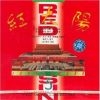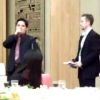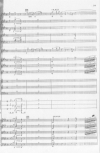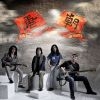
Illustration:
ill. 2.5 a (set: 2.5)
Date:
1993
Genre:
CD Cover, photograph, music, songs
Material:
photograph, colour; original source: CD cover, colour
Source:
The Red Sun 红太阳 (Private copy/photograph), 1993.
Courtesy:
Barbara Mittler
Inscription:
毛泽东颂歌新节奏联唱 1 - 5 辑 * 珍藏版 红太阳
Keywords:
Mao Zedong, red sun, hero, mass culture, Popstar Mao, music, Mao Cult, Red Sun Fever, contemporary China, popular culture, Mao portrai, Mao memories, nostalgia, Red is the East, Cultural Revolution, Tian'anmen Square,Mao badge
Popstar Mao (Liuxing Mao 流星毛)
Pop and rock versions of the old revolutionary songs praising the sun began flooding the Chinese music market since the late 1980s, a trend which culminated in the so-called “Red Sun Fever,” 红太阳热 around the centenary of Mao’s birthday in 1993: millions of tapes and CDs with pop, rap, jazz and rock versions of the old songs in praise of Mao were being published almost by the day. Within a few months in 1991 more than one million copies sold, 14 million by 1993, 72 million by 2006 and 80 million by 2008: the movement has not subsided, to the contrary (Barmé 1999:186; Lee 1995:99, see 2.5 a).
Some of these songs epitomize the romantic apotheosis which is part of earlier propaganda versions of Red is the East. One remake of Mao quotation songs published in 1991 on a CD called Quotation Songs by Mao: A Medley of Rocksongs in Praise of a Great Man 毛主席语录歌伟人颂摇滚联唱 (mus. 2.3), for example, begins with Red is the East played, in a kitsch romantic version, on a slightly out-of-tune Chinese glockenspiel backed by a choir reciting from the original text of the song, “The fact that China has brought forth a Mao Zedong is the greatest pride of China’s people” 中国出了个毛泽东, 这是中国人民的骄傲.



































